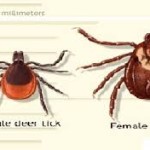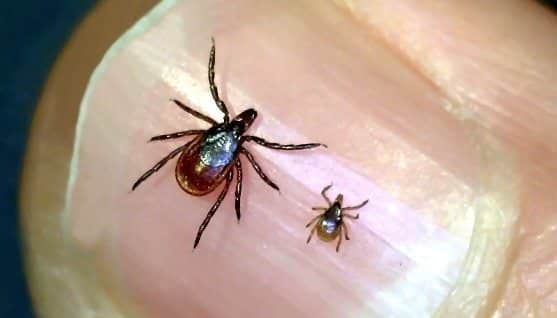
Deer ticks can also transmit other tick-borne illnesses such as Babesiosis and Anaplasmosis. They are very small and hard to spot adult female deer ticks measure only about 2.7 millimeters in length and can be as small as a poppy seed. Deer ticks, on the other hand, are the primary vectors for Lyme disease in the United States. Wood ticks do not typically carry Lyme disease, although they can transmit other tick-borne illnesses. Do Wood and Deer Ticks Carry Lyme Disease? It is important to note that this type of transmission is extremely rare, so it is unlikely that a person would contract Lyme disease from a wood tick bite. However, it is possible for wood ticks to become infected with Borrelia burgdorferi if they feed on an animal that has been previously infected with the bacteria. Lyme disease is caused by the bacterium Borrelia burgdorferi and is typically transmitted by black-legged deer ticks. While they may carry diseases such as Rocky Mountain spotted fever, they do not transmit Lyme disease. No, wood ticks are not known to carry Lyme disease.

The lab can detect the most common tick-borne diseases found in this species. To confirm that a tick is a deer tick, it is best to send the specimen to the Tick Research Lab of Pennsylvania for testing.


The female deer tick is typically smaller than the male, measuring around 1/8 inch in length. Its mouthparts are long and thin, and there are no festoons (small hairs) along the abdomen. Source: Identifying a Deer TickĪ deer tick, also known as Ixodes scapularis, can be identified by its reddish-brown body and black shield-like pattern on its back. Finally, deer ticks have an oval-shaped body, while wood ticks have a more U-shaped back. Additionally, the lower back region of a deer tick is red in color while that of a wood tick is black. Wood ticks are larger than deer ticks and have a brown body with encircling dark regions along the back. Deer ticks are typically smaller than wood ticks and have a reddish-brown body with small, light red spots on the back. The main difference between a deer tick and a wood tick is in thir appearance. After removing the tick, cleanse the area with rubbing alcohol or soap and water then dispose of it in a sealed bag or container away from children and pets.īy knowing the difference between deer tick vs wood tick bites you can better protect yourself from potential health risks associated with both types of parasites while enjoying outdoor activities this summer season!ĭifferences Between Deer Ticks and Wood Ticks

If you do find a tick attached to your skin, it's important to remove it carefully using tweezers or a special tick removal tool available at most drug stores. Be sure to check yourself for any attached ticks after being outdoors for an extended period of time. Wear long pants tucked into socks or boots as well as a long-sleeved shirt to minimize exposed skin. It's important to take precautions when venturing into an area where eiter type of tick may be present. Wood Ticks do not transmit Lyme disease but they can carry other illnesses such as Rocky Mountain spotted fever and Tularemia. These ticks prefer warmer climates such as those found in the southeastern United States but can also be found in othr regions of the country. Wood Ticks, also known as dog ticks or American dog tick, are slightly larger than deer ticks and have a brown body with white markings on their backs.


 0 kommentar(er)
0 kommentar(er)
